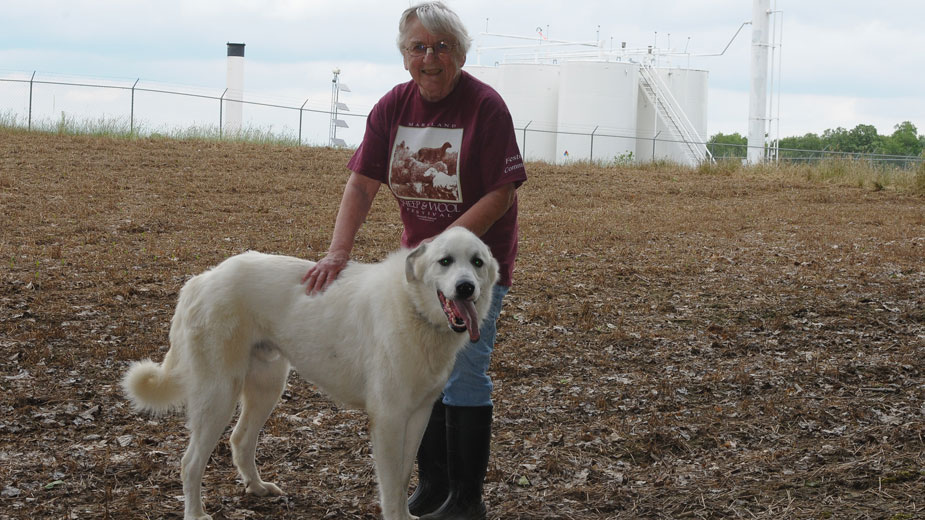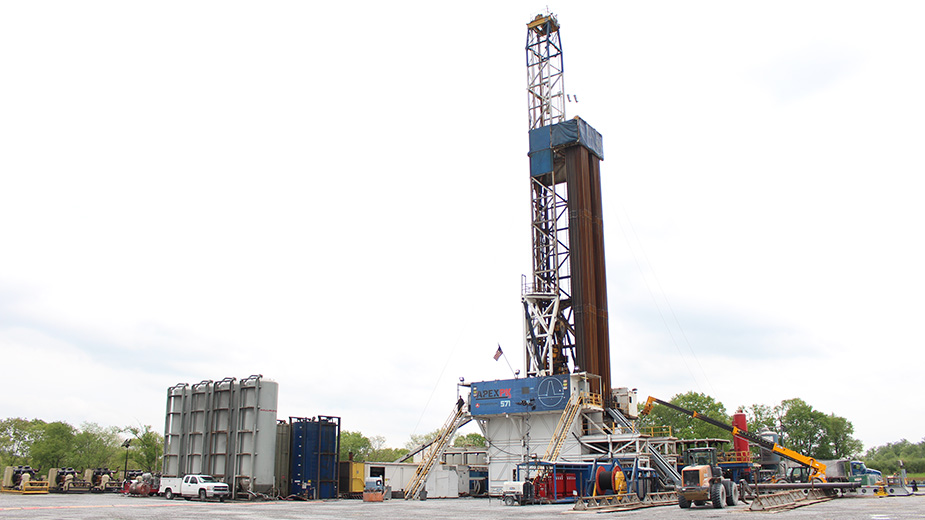Royalties Still Flow from Utica Wells
LISBON, Ohio — Cynthia Koonce has seen her share of battles with the oil and gas industry.
She and others in southern Columbiana County and northern Carroll County sued Chesapeake Energy over what they believed were bogus lease terms in 2012. She’s also been vocal about issues that involve pipelines and other infrastructure.
Ultimately, the litigation failed in court and “we got shot down,” Koonce says as she walks near the stalls of her sheep farm near Guilford Lake in Columbiana County. “They had such a good lease from their point of view.”
Koonce was among 24 parties in the area who signed oil and gas leases with Denver-based Anshutz in 2008. At that time, few were aware of the giant energy reserves in the Utica shale, and Anshutz was able to scoop up these leases at bargain prices, speculating they would be worth much more in the ensuing years as the Utica developed.
“They knew something we should’ve known, but didn’t,” Koonce laments.
Anshutz was right. In 2011, Chesapeake purchased the leases from the company for considerably more money, leaving a bitter taste in the mouths of those landowners who felt they’d been cheated. Once big energy companies swept in to the Utica, they were paying up-front bonuses as much as $5,000 to $6,000 per acre to secure leasehold agreements and offering in some cases 20% gross royalties on oil and gas production from drilled wells. Koonce’s lease calls for just 12.5% in royalty payments.
“It wasn’t just that,” she recalls. “There were some other things too.”
Koonce has 225 acres that Chesapeake leases, about 150 of which are tied to the Huffman South well nearby. “We had a lot of oil in this one,” she notes. Another acre and a half is tied to another well – the Huffman North well, she says.
It’s been nearly five years since royalty payments on producing natural gas and oil wells across the northern tier of the Utica shale started trickling into the pockets of landholders.
The prospects were good then. High oil prices helped boost production of these early Utica wells, resulting in generous payments to landholders who secured leases directly with major exploration companies such as Chesapeake. Once oil prices crashed in 2015, so too did leaseholders’ royalty payments.
Oil prices have steadily climbed in the meantime, and some landowners are beginning to see an increase in their monthly royalty checks. Others, however, are left wondering why their payments haven’t enjoyed the lift along with the recent boost in energy prices.
Even with her modest royalty structure, Koonce says, monthly payments are sufficient. “The money is nice. It’s paying the mortgage,” she says. While she declines to say specifically how much money she receives each month from Chesapeake, she’s seen volatility this year. “I’ve noticed about a $1,000 difference between the last check and this month’s,” she says.
Others have seen their royalty payments reduced by more than half since the first checks started rolling in.
“When this first started, we were getting about $4,000 a month,” relates Bob Crosser, who owns a farm in Center Township near Lisbon. “We could get a lot done on the farm.”
By late 2016 and early 2017, however, those royalty payments evaporated to just more than $200 per month, Crosser says. Under his lease, Crosser is to be paid 15% of gross production from the well, most of which is natural gas.
Initially, he says, the land agents who approached him about signing his lease convinced him that as many as six wells would be drilled at the site, thereby increasing his payments.
So far, just a single well has been drilled and is producing on Crosser’s pad. “We’re all gullible when they tell you how great it’s going to be,” he says. “The land men came out and said, ‘We’re going to make you a millionaire.’ It didn’t happen and it sure hasn’t happened around here.”
Crosser says he’s disappointed that Chesapeake hasn’t drilled new wells, which he attributes to the sluggish oil and gas market of two years ago. His royalty payments have witnessed a roller coaster ride since they bottomed out a year and a half ago, a reflection of the volatility still evident in the market. His last royalty check paid out roughly $700, about $400 less than the previous month.
“Something doesn’t seem right,” he says with a shrug. “Gas and oil on the world market go up and down and so do the royalties. So, we’ll just sit here and let it do what it’s going to do.”
Crosser says that he’s not fluent with computers, so he isn’t consistently checking the price of natural gas or oil. His neighbors, some of whom have acreage tied to the well, have also witnessed a big drop in payments.
Still, Crosser acknowledges leasing the land has brought more benefits to his bottom line and others in the region. His initial lease bonus payments amounted to $1,500 per acre. “I guess I’m glad we leased the land,” he muses. “I just wish they would come out and drill the other five. Maybe they’ll drill them one day.”
Alan Wenger, an attorney for Harrington, Hoppe & Mitchell who directs the oil and gas division of his firm, says legal challenges still abound across the Utica. “A lot of these are related to royalties,” he says.
Much of the litigation involves landowners who claim that companies such as Chesapeake are taking deductions from royalty payments that aren’t covered in the lease agreements, Wenger says.
“There are a number of challenges. And it’s heating up,” he says. “In my jaundiced opinion, most leases have hidden computations and methods of determining royalties that benefit the company and not the landowner.”
Recently, Wenger says, a landowner came into his office and wanted him to examine his royalty statements. Although the landowner’s lease explicitly said that he should be receiving 17.5% of gross production, further calculation revealed that it was merely 12.5%. “This adds up to many thousands of dollars over the years,” the lawyer says.
Those who haven’t paid attention to their royalty statements could be receiving far less than what their lease mandates, Wenger says. In some cases, he’s seen royalty checks that showed a negative balance. “Now, there was production, they should get a gross percentage,” he says, “but they’re still negative.”
Utica wells have been in production for nearly five years, and these differences could add up to millions of dollars for large leaseholders. “In Ohio,” Wenger says, “it ranges from a few dollars to millions of dollars. It can be a huge amount.”
But for landowners such as Koonce, the arrival of the oil and gas business to northeastern Ohio has helped the economy here. And, she hasn’t observed any evidence of environmental problems since the Huffman well was drilled in 2014.
“It’s made life a little easier,” Koonce says. “They’re paying us every month [she pauses a moment] and we’re spending it.”
Copyright 2024 The Business Journal, Youngstown, Ohio.



